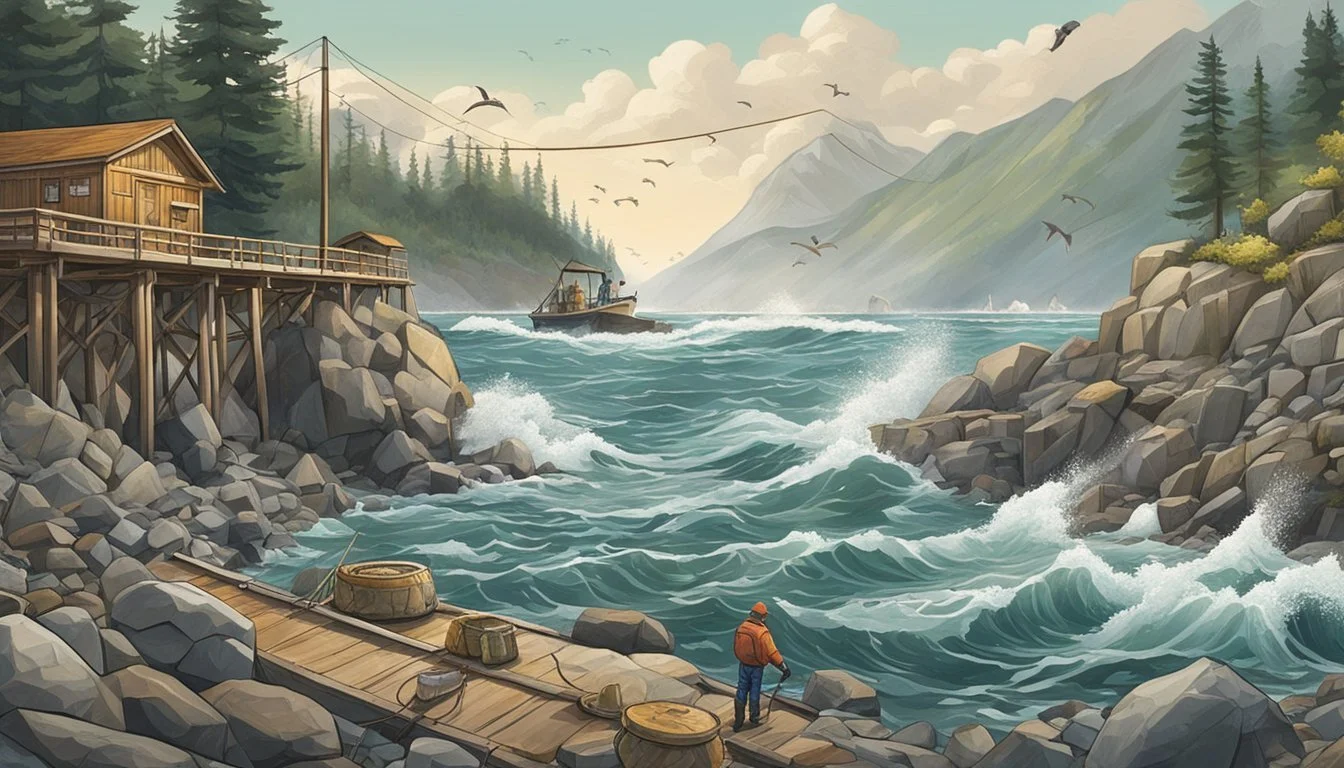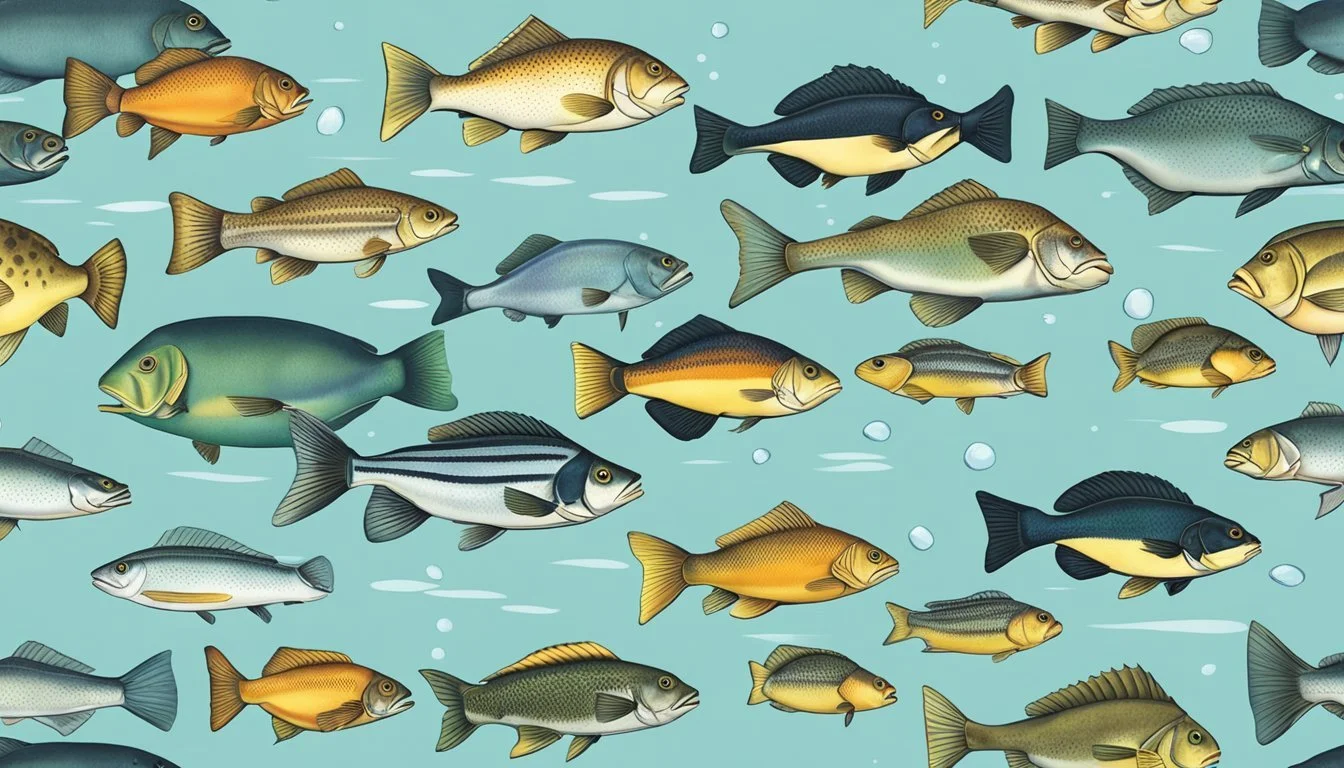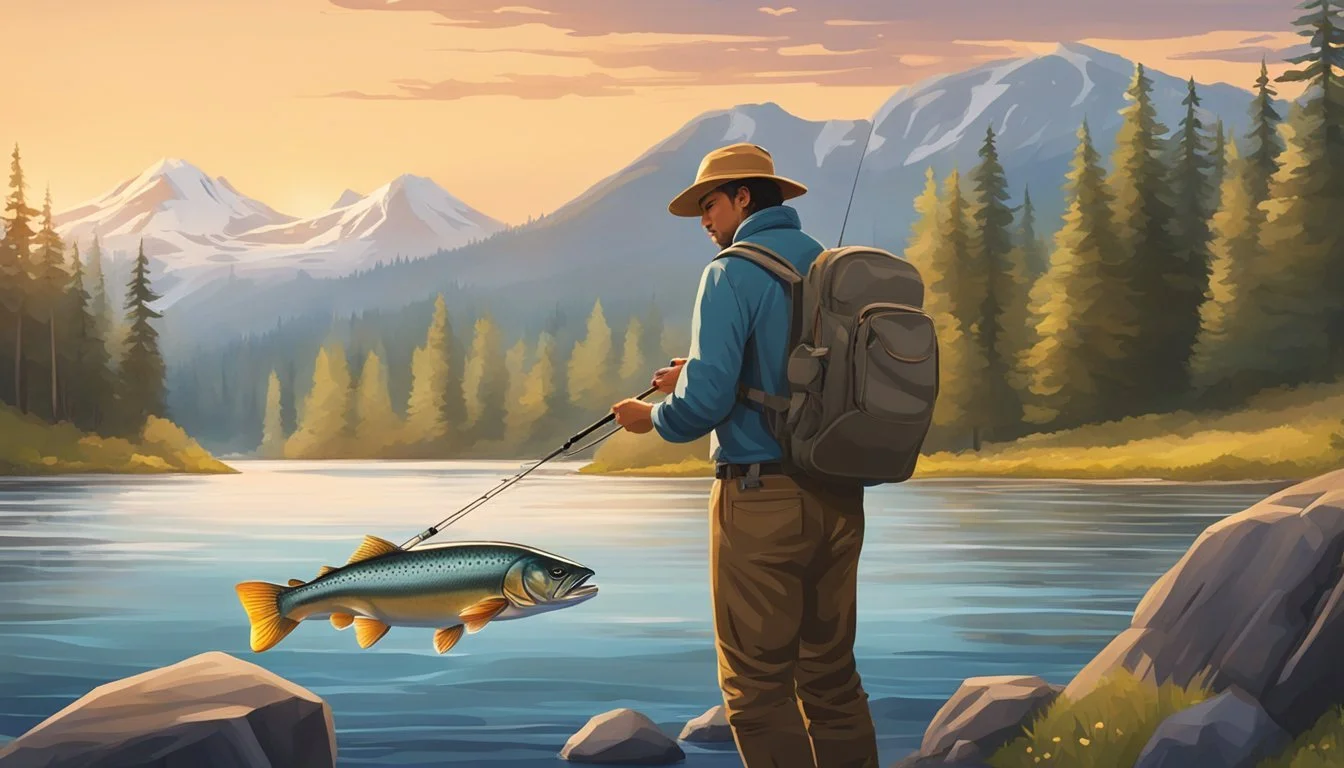Best Fish to Catch and Eat in Washington
A Guide to Prime Seafood Selections
Washington State is renowned for its diverse aquatic habitats, making it a haven for anglers seeking both the thrill of the catch and the pleasures of a fresh meal. With its expansive coastline, numerous rivers, and lakes, the state offers a variety of fish (What wine goes well with fish?) species that are both a delight to catch and excellent on the plate. Anglers in Washington can target species that range from the fighting steelhead trout to the prized Dungeness crab (how long does crab last?), each offering a unique fishing experience and a delicious taste when prepared.
The state's waters teem with sought-after fish such as the steelhead trout, known for their resilience and the challenge they pose to even seasoned fishermen. In freshwater bodies, the rainbow trout is a common catch and widely enjoyed for its flaky texture and mild flavor. The Pacific Ocean's bounty along the Washington coast comes in the form of salmon (What wine goes well with salmon?) and halibut, both of which are celebrated not only for their sporting qualities but also for their culinary value, yielding meals that are cherished by locals and tourists alike.
For those angling for something different, Washington's seafood variety continues with shellfish options such as oysters and clams (What wine goes well with clams?). These can often be foraged or fished, providing a unique experience that goes beyond traditional rod-and-reel fishing. The state's fishing grounds are managed to ensure sustainability, allowing anglers to enjoy the natural resources while maintaining the ecological balance. Whether for sport or sustenance, fishing in Washington is an activity that promises both excitement and a satisfying end to a day on the water.
Washington's Prime Fishing Seasons
In Washington, each season offers distinct opportunities for anglers to catch a variety of fish, from trout to salmon, in diverse freshwater locales, including rivers and lakes.
Spring Fishing Opportunities
Spring in Washington is a transitional time for fishing as the snow melts and the rivers swell. In May, rivers such as the Columbia River become hotspots for rainbow trout and steelhead. Fly-fishing techniques are particularly effective during this period.
Summer Fishing Highlights
The summer months bring prime fishing conditions across Washington. Salmon, especially Coho salmon, are abundant in the summer, with July standing out as a peak month. The Columbia River and numerous lakes provide ample locations for successful catches.
Fall Fishing Destinations
Early fall is a renowned time for fishing in Washington, with a variety of species readily available. In particular, lakes become ideal destinations for targeting salmon, while rivers offer continuous chances for catching steelhead.
Winter Fishing Adventures
Winter presents a challenge with ice affecting many lakes, but the catch can be quite rewarding. Cold-weather enthusiasts can still find locations for ice fishing, targeting species that thrive in these conditions, such as trout in the state's freshwater lakes.
Top Freshwater Fishing Locations
Washington State offers a diverse range of freshwater fishing locations, each with its own unique set of species and angling opportunities.
Lakes and Their Notable Species
Lake Washington: Renowned for smallmouth bass and cutthroat trout, Lake Washington also hosts yellow perch, making it a prime location for varied fishing interests.
Potholes Reservoir: Offers excellent largemouth and smallmouth bass fishing, alongside opportunities to catch rainbow trout and yellow perch.
Rivers and Fish Diversity
Yakima River: Known for its trout fishing, particularly rainbow and cutthroat trout, and also supports steelhead during certain seasons.
Spokane River: Offers a range of species including trout and warm-water species like bass, and is regulated for the conservation of red-band rainbow trout.
Lowland Lakes Overview
Regulations: Managed by the Washington Department of Fish and Wildlife, fishing regulations are in place to ensure sustainable practices.
Fish Species: The lowland lakes predominantly harbor trout, largemouth bass, and crappie.
Accessibility: These waters are generally accessible with ample opportunities for anglers of all ages.
Washington's lowland lakes are integral to the state's fishing landscape, providing extensive accessibility for freshwater catching and a variety of species to target.
Essential Saltwater Fishing Areas
Washington's coastal waters and intricate network of islands offer rich fishing grounds for a variety of sought-after species. Anglers can expect to encounter salmon, halibut, coastal cutthroat trout, and more, with each area presenting its own unique opportunities and challenges.
Puget Sound Fishing Excursions
Puget Sound stands as a premier destination within the Pacific Northwest, renowned for its salmon fishing. Here, one can target both Coho (silver) salmon and Chinook (king) salmon, with the latter being particularly prestigious. The expansive waterway, stretching over 100 miles, provides ample fishing spots, from the dynamic waters of the Strait of Juan de Fuca to the serene shores of Whidbey Island.
Key Species: Salmon, Coastal Cutthroat Trout
Ideal Season: Summer through fall
Coastal Regions and Open Ocean
The Olympic Peninsula's coastal regions and the open ocean off Washington's shores are prime territories for rigorous saltwater fishing. One can pursue the elusive albacore tuna (What wine goes well with tuna?) or the mighty Pacific halibut in these waters. Offshore fishing ventures promise excitement and the potential for sizable catches, making them a thrilling pursuit for experienced anglers.
Notable Catches: Albacore Tuna, Halibut
Fishing Technique: Offshore, deep-sea fishing
Strategic Fishing Islands
Surrounding the San Juan Islands, anglers find an array of unique fishing opportunities nestled among this archipelago. These islands are a convergence zone for migrating salmon, offering chances to catch these prized fish. Additionally, the sheltered inlets and bays are perfect havens for crabbing, complementing the fishing experience.
Targeted Species: Salmon, Crab
Fishing Spots: Inlets, protected bays
Washington Fish Species Breakdown
Washington State's waterways offer a diverse range of fishing opportunities, from abundant freshwater lakes to the expansive Pacific Ocean. Anglers can expect to encounter a variety of species suitable for both sport and table fare.
Popular Freshwater Species
Rainbow Trout: A favorite among anglers, Rainbow Trout thrive in Washington's clear streams and lakes, providing year-round fishing opportunities.
Steelhead: An anadromous form of the Rainbow Trout, Steelhead are prized for their fight and are typically found in Washington's rivers.
Largemouth and Smallmouth Bass: Both species are celebrated for their aggressive strikes and are commonly found in the state's warmer waters.
Kokanee: The landlocked version of the Sockeye Salmon, Kokanee are found in several of Washington's freshwater lakes.
Black Crappie: Known for their delicious taste, Black Crappie are targeted for their panfish size and are plentiful in many lakes.
Fish Season Location Rainbow Trout Year-round Lakes and Rivers Steelhead Variable, check local regulations Rivers Largemouth Bass Spring-Fall Warm water habitats Smallmouth Bass Spring-Fall Rivers and Lakes Kokanee Spring-Fall Freshwater Lakes Black Crappie Spring-Summer Lakes
Sought-After Saltwater Species
Chinook Salmon (King): The largest of the Pacific salmon, Chinook are sought after both for sport and their rich flavor.
Coho Salmon (Silver): These acrobatic fish are popular for sport fishing and are known for their aggressive behavior.
Halibut: One of the largest flatfish, Halibut is targeted for its impressive size and delicious meat.
Coastal Cutthroat: Often found near the shoreline, these trout can be caught using a variety of methods.
Pink Salmon: Known for their biennial runs, Pink Salmon offer a great opportunity for anglers every other year.
Fish Peak Season Area Chinook Salmon June-September Coastal Waters Coho Salmon June-September Coastal and Puget Sound Halibut May-September Coastal Deep Waters Coastal Cutthroat Year-round Coastal Streams and Estuaries Pink Salmon August-September Puget Sound (Odd-numbered years)
An Overview of Native Fish
Washington's ecosystems support a variety of native fish species. The preservation of habitats and responsible fishing practices are pivotal in maintaining the natural balance of these indigenous populations.
Steelhead and Rainbow Trout are notable natives, often sharing the same habitats at different life stages.
Sockeye Salmon and Kokanee are also native to Washington, with Kokanee being the non-migratory form residing in lakes.
Conservation efforts aim to protect species like the Coastal Cutthroat and ensure their populations remain robust for future generations.
Fishing Techniques and Strategies
Successful fishing in Washington requires a diverse set of techniques and strategies tailored to the water body and target species. Whether anglers prefer the calm of freshwater bodies or the challenge of the saltwater expanse, understanding the right approach for each environment and season is crucial for a fruitful catch.
Freshwater Fishing Techniques
Bait: For catching trout, live bait such as nightcrawlers, and artificial baits like spinners and spoons, can be effective. During spawning, it's essential to use techniques that mimic natural prey behavior.
Fly Fishing: When targeting species such as rainbow trout, fly anglers often use a variety of dry and wet flies to match local insect hatches.
Boat vs. Shore: Fishing from a boat allows for techniques such as trolling with downriggers for salmon, whereas shore anglers often rely on casting lures or bait from docks or riverbanks.
Saltwater Tactics
Trolling with Downriggers: Offshore saltwater trolling is a strategic method for targeting salmon. Anglers often use brightly colored lures or rigged bait to attract fish.
Fly Fishing: Techniques involve casting large, bright-colored flies that move in the current, simulating baitfish or other prey. Spey rods may be used to target larger species such as Chinook salmon.
Seasonal Fishing Methods
Summer Night Fishing: During warm summer nights, fishing remains active, especially for bass using slow-moving lures or surface baits to take advantage of the cooler temperatures and active fish.
Winter Ice Fishing: Anglers use different ice fishing strategies, like jigging with small lures or live bait, to catch species that remain active under the ice, such as yellow perch.
Specific Seasonal Methods: Adjusting tactics for salmon can mean focusing on the correct depth and temperature ranges as fish behavior changes with the seasons.
In Washington, fishing techniques must evolve with the angler's environment, target fish, and conditions at hand. Whether it's casting a fly on a serene lake or trolling the depths of the Pacific, strategic adjustment and skillful execution determine the day's success.
Key Fishing Regulations and Conservation
In Washington, anglers must navigate a comprehensive set of fishing regulations designed to sustain fish populations and their habitats. Adherence to species-specific guidelines and conservation measures helps ensure a responsible and rewarding fishing experience.
Understanding Washington Fishing Laws
The Washington Department of Fish & Wildlife (WDFW) enforces fishing laws to balance recreational opportunities with conservation. Each angler must possess the appropriate recreational fishing license before they commence fishing. Seasons, size limits, and bag limits vary by area and species, tailored to protect fish during critical periods such as spawning.
Species-Specific Regulations
Washington's diverse range of fish species is matched by specific regulations to protect them:
Salmon and Steelhead: Often subject to seasonal closures and catch limits to conserve diminishing populations.
Bass Fishing: Regulations may include minimum size limits and daily catch limits, depending on the water body.
Trout: Aside from general size requirements, certain areas implement fly-fishing only rules or catch-and-release policies to preserve stocks.
Species Minimum Size/Limit Daily Limit Notes Channel Catfish No min. in lakes 5 No size/daily limit in rivers Burbot No min. size 5 Crappie No min. size No daily limit Also applies to several species Trout (General) Varies Varies Check local regulations Salmon (Specific) Varies Varies, if allowed Depends on the species and area
Conservation Efforts in Fishing
The WDFW undertakes numerous conservation efforts to ensure the health of fish habitats and populations. These efforts include habitat restoration projects, stringent regulation of fishing seasons, and catch-and-release practices. By following these regulations and participating in conservation practices, anglers contribute to sustaining fish populations for future generations.
Local Fishing Communities and Culture
Washington's fishing communities are vibrant and contribute significantly to the state's culture and economy. They are characterized by a variety of tournaments, a network of angler clubs and societies, and a notable impact on both local economies and tourism.
Fishing Tournaments and Events
Each year, Washington hosts numerous fishing tournaments that bring together anglers of all skill levels. Events like the Washington Tuna Classic and the Westport Charterboat Association Fishing Derby highlight the community's competitive spirit. These events are not only about the catch but also foster a sense of camaraderie among participants.
Fishing Clubs and Societies
Washington hosts a diverse array of fishing clubs and societies that provide support, education, and companionship to their members. Clubs such as the Puget Sound Anglers and the Washington Fly Fishing Club play a crucial role in preserving fishing traditions and promoting sustainable fishing practices. They often serve as a platform for experienced anglers to mentor newcomers, ensuring that fishing knowledge is passed on through generations.
Contribution to State Economy and Tourism
Fishing in Washington is a driver of local economies and tourism. With demand for recreational fishing experiences, services like guided fishing tours and fishing gear rentals provide employment and support small businesses. The allure of Washington's rich fishing culture also attracts tourists, contributing to the state's economy and strengthening the prominence of local fishing communities.
Supplementary Fishing Resources
Washington State offers a wealth of resources for anglers, from seasoned experts to those casting their lines for the first time. The state facilitates a variety of services that augment the fishing experience, including professional guides, licensing provisions, and educational programs tailored for all ages. These resources ensure that fishing in Washington is not just a pastime but a well-supported adventure.
Fishing Guides and Charters
Professional Fishing Guides and Charters are invaluable for those looking to optimize their fishing excursions in Washington. Licensed guides provide local knowledge on the best fishing spots, techniques, and seasonal trends. Charters on the other hand offer equipped boats ideal for groups aiming to fish in the diverse waters of Washington, from its serene lakes to the bustling Puget Sound.
Key Services Offered:
Local expertise on fishing locations and techniques
Access to well-equipped boats
Knowledge of fishing regulations unique to Washington
Fishing Licenses and Permits
Licenses and Permits are mandatory for fishing in Washington, and regulations may vary based on location, species, and the type of fishing. Anglers can purchase their licenses from the Washington Department of Fish and Wildlife (WDFW) or authorized dealers statewide.
Important Details:
Annual and short-term licenses: Options vary for residents, non-residents, and youth.
Specialized permits and endorsements: Required for certain fish species and waters.
Free fishing days: Occasions when licenses are not required.
Educational Opportunities and Workshops
Educational Workshops offer anglers the chance to deepen their understanding of sustainable fishing practices and species conservation. The Washington Department of Fish and Wildlife conducts educational programs that encompass workshops for all age groups and skill levels.
Educational Resources Include:
Conservation practices
Species identification workshops
Fishing technique instruction
These resources are designed to improve the angling experience and enhance the responsible enjoyment of Washington's fishing opportunities.
Conclusion
Washington State is renowned for its diverse and abundant fishing opportunities, from serene freshwater rivers teeming with Steelhead Trout to the expansive coastal waters home to a variety of salmon species. Anglers can enjoy the state's unspoiled natural scenery while engaging in the pursuit of prized fish.
Conservation efforts are crucial in sustaining these fishing habitats and ensuring future populations thrive. Adherence to regulations and embracing sustainable fishing techniques plays a significant role in protecting Washington's aquatic ecosystems.
For those seeking to integrate their catch into their diet, choosing fish low in contaminants is a priority. Washington provides resources, such as advisories, to help anglers make informed decisions about the fish they consume.
Recommended Techniques:
Use appropriate gear and methods for each species
Practice catch and release where necessary
Stay informed about local conservation measures
Anglers should not only cherish the joy of fishing but also participate in the preservation efforts to maintain Washington as a top fishing destination. Whether one fishes for sport, sustenance, or both, Washington's waterways offer incomparable fishing experiences.







